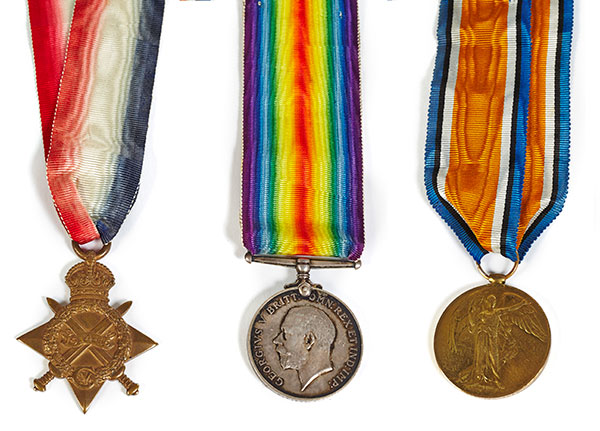By Lar Joye
When war broke out in 1914, about 21,000 Irishmen were serving in the British Army. Another 47,000 Irish reservists were quickly mobilised and were to be joined by about 150,000 volunteers over the next four years. By the end of the war in November 1918, 35,000 Irish soldiers had died and about 90,000 returned home to Ireland. These veterans were presented with service medals to acknowledge their participation in the war.
The first medal, issued in 1917, was the ‘1914 Star’, which was awarded to 370,000 members of the small professional British Army known as the British Expeditionary Force who went to war on the Western Front in 1914. The following year the 1914–1915 Star medal was issued.
The most common of the service medals is the silver ‘British War Medal’, of which 6.5 million were issued to those who had served in uniform or had given ‘approved service’, such as nurses and sailors in the merchant marine, from 1914 to 1918. (This was later extended to cover British Army service in the Russian Civil War up to 1920.) In addition, 110,000 bronze versions of these medals were also presented to members of the Chinese, Indian and South African Labour Corps.

Finally, the ‘Allied Victory Medal’ was awarded to holders of the 1914 Star and to most of those who had been awarded the British War Medal—5.7 million in total. It was similar in design to medals that were issued by other Allies (France, Belgium, the USA and Japan). If you have any of these medals at home, you will find the name, rank and number of the soldier engraved on the rim, which allows you to start your family research on various genealogical websites.
Lar Joye is Heritage Officer of Dublin Port.
